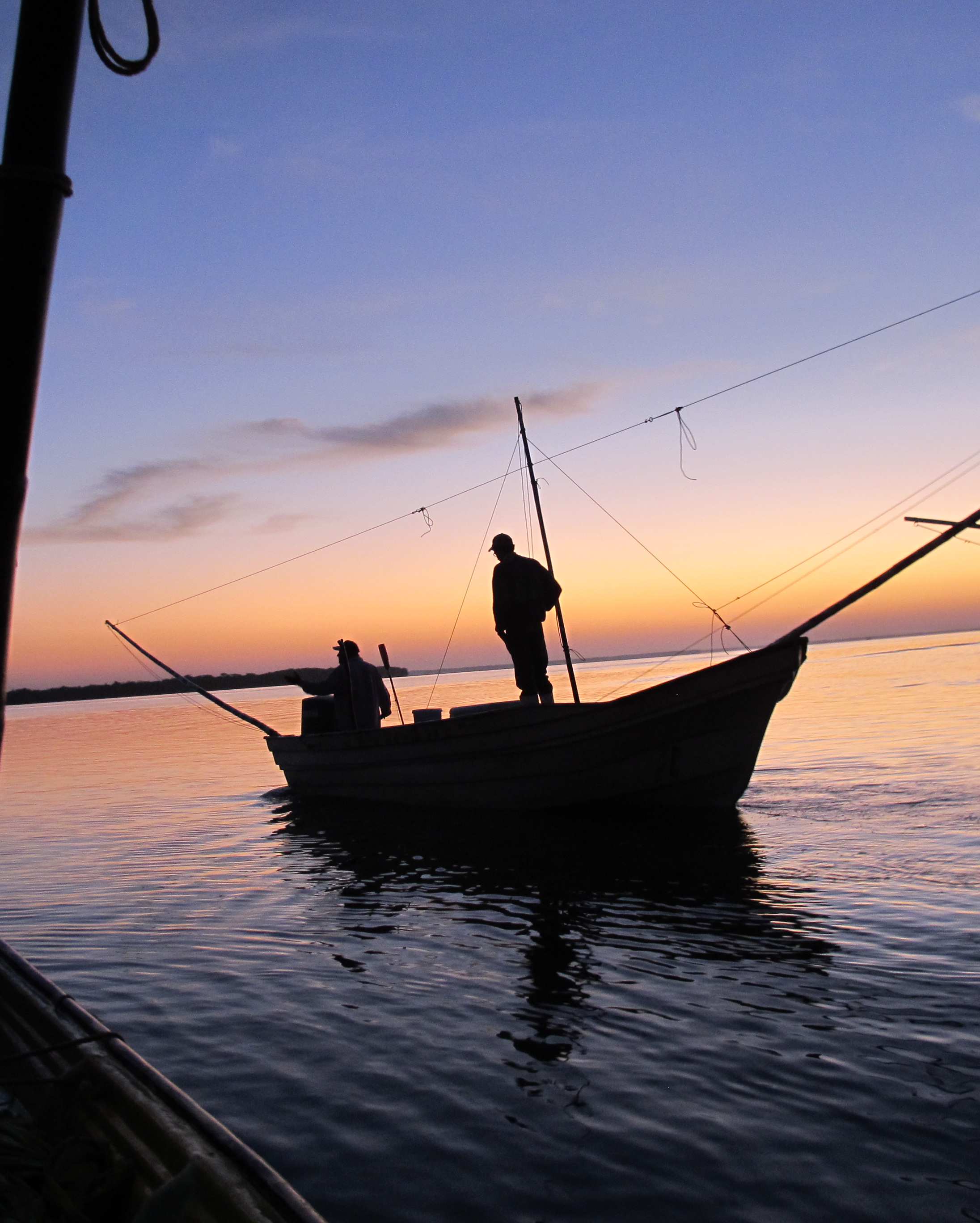Field Notes from Sinaloa
This week I find myself in the final location of my trip: Sinaloa. To learn more about the artisanal shrimp fishery here, today I woke up at 4am to experience a day in life of a shrimp fisherman on the Bay of Santa María. This was the last day of shrimp fishing for a week as la “marea muerta” (neap tide, when the tidal current is at a minimum) was approaching.  As the shrimp nets must constantly be moving against the current and against the direction of the shrimp to work, the cooperatives forbade their members to fish on these days. In a small boat, we set off to a nearby island and waited for the tide to shift at sunrise. At sunrise, we joined the 20 other boats as we set off from the island and assumed a spot in the bay. After hearing about the violence in the fishery (and on land in the region), corruption in the cooperatives, and the scramble for resources here, I didn’t expect the peacefulness that greeted us on the water.
As the shrimp nets must constantly be moving against the current and against the direction of the shrimp to work, the cooperatives forbade their members to fish on these days. In a small boat, we set off to a nearby island and waited for the tide to shift at sunrise. At sunrise, we joined the 20 other boats as we set off from the island and assumed a spot in the bay. After hearing about the violence in the fishery (and on land in the region), corruption in the cooperatives, and the scramble for resources here, I didn’t expect the peacefulness that greeted us on the water.
We arrived at a spot near the two other boats in our team (Don Heraldo fishes with 4 other family members. They compile their catch at the end of the day and share profits equally which helps protect them if one has a bad fishing day) and dropped in a plumb line to test the depth of the water.  We then dropped a triangular-shaped sail (la burra) from one side of the boat and the net (suripera) on the other. The suripeda is a special net tied to two poles which extend outward from the boat. Once the net was set, we relaxed, made aguachile (a ceviche made from lemon, hot sauce, salt, and shrimp) and held the net to feel the shrimp dropping inside. The burra drags in the water and pulls the boat along. Once the steady tug of the shrimp falling stopped, we hauled up the net and moved to another spot. Our first haul pulled up about 40 kilos of shrimp, the total catch from the day before, which set a relaxing mood for the rest of the day.
We then dropped a triangular-shaped sail (la burra) from one side of the boat and the net (suripera) on the other. The suripeda is a special net tied to two poles which extend outward from the boat. Once the net was set, we relaxed, made aguachile (a ceviche made from lemon, hot sauce, salt, and shrimp) and held the net to feel the shrimp dropping inside. The burra drags in the water and pulls the boat along. Once the steady tug of the shrimp falling stopped, we hauled up the net and moved to another spot. Our first haul pulled up about 40 kilos of shrimp, the total catch from the day before, which set a relaxing mood for the rest of the day.
Despite my pleasant day on the water, the shrimp fishery here faces major hurdles if it is to be a sustainable fishery.  About 3,000 boats use the bay during the days when shrimp numbers are at peak levels, many fishing cooperatives are a far cry from the political ideal that motivated their existence here in Mexico, and there are many conflicts between inshore and offshore fleets. However, on that sunny day, making aguachile, swimming with dolphins, and waiting for the steady tick tick of the falling shrimp, the struggle for livelihoods on the waters of Sinaloa seems a little more human.
About 3,000 boats use the bay during the days when shrimp numbers are at peak levels, many fishing cooperatives are a far cry from the political ideal that motivated their existence here in Mexico, and there are many conflicts between inshore and offshore fleets. However, on that sunny day, making aguachile, swimming with dolphins, and waiting for the steady tick tick of the falling shrimp, the struggle for livelihoods on the waters of Sinaloa seems a little more human.

